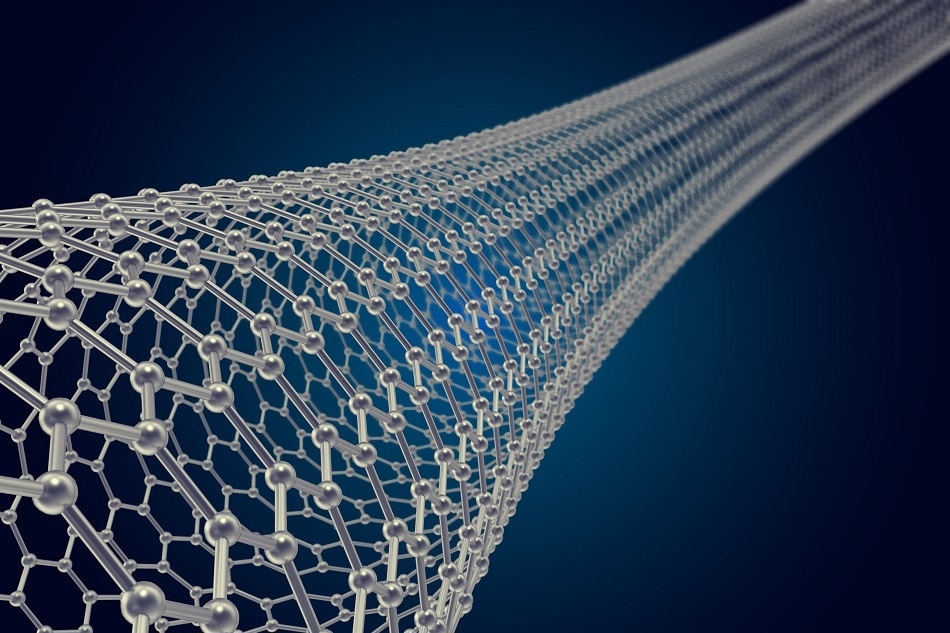Nanochemistry unites – unsurprisingly – nanoscience and chemistry, exploring the new rules of behavior that emerge on the nanoscale.

Shutterstock.com/JurikPeter
Researchers in the field of nanochemistry work from the atom up, with the aim of engineering nanosized materials. They use a number of methods to prepare and assemble ‘little pieces of matter’ which display unique magnetic, electronic, optical, chemical and mechanical behaviors attributable only to their nanometer size.
Nanochemistry represents a novel approach to building devices atom by atom, with molecular scale precision. It involves studying the synthesis and characterization of materials on the nanoscale, focusing on how the atoms behave and interact, and how they can be manipulated and controlled in chemical reactions at the atomic level.
Since all of the atoms in a nanoparticle are present on the surface, these particles exhibit chemical and physical properties that differ from the individual or aggregates of atoms or molecules. Such systems lie at the junction between classical and quantum behavior and display actions that don’t exist in larger devices. Nanochemistry also focuses on how these individual atoms can assemble into larger molecules and the behavior they exhibit.
Applications of Nanochemistry
Nanochemistry has use in chemical, physical and materials science, engineering and biological and medical applications. Using single atoms as building blocks offers new ways to create innovative materials, the opportunity to create the smallest features possible in integrated circuits and the chance to explore quantum computing for example.
It might seem relatively new, but nanochemistry has been employed for many years; for example, in sunscreens that absorb UV light, in clear coatings for cars that protect the bright paint colors underneath, or in carbon nanotubes for lightweight car parts or sporting equipment.
Nanochemistry has also been used to study the health and safety effects of airborne and waterborne nanosized particulates, and nanoparticles have been used to clear up or neutralize pollutants.
Larger molecular assemblies such as dendrimers – highly branched three-dimensional nanoscale molecular objects of the same size and weight as traditional polymers – are under investigation for use in molecular recognition, nanosensing, light harvesting and optoelectrochemical devices.
They can be synthesized in a step-by-step fashion, allowing for incredibly precise control of their size and geometry. Since they are created layer by layer, the properties of any single layer can be controlled by selecting specific monomers, making them ideal building blocks in nanochemistry for the creation of three-dimensional structures.
Nanotubes display beneficial behavior relative to properties such as electrical and thermal conductivity, strength, stiffness, and toughness. They can be functionalized – that is given a specific purpose – with the addition of molecular recognition agents which bind specifically to molecular tags, making them ideal for use as high-resolution probes in atomic force microscopy, as channels for material separation and as selective gates for molecular sensing.

Shutterstock.com/rost9
Nanocomposites constitute a wide variety of systems composed of dissimilar components mixed at the nanometer level. Their behavior is dependent on the properties of the components, their morphology and the interactions between the individual components, which are often novel properties not seen in the parent material.
Nanocrystals and clusters are another promising area of research in nanochemistry. Crystals of nano-sized proportions can be combined into clusters and show potential in high-density data storage and optoelectrical applications. They might also find uses as biochemical tags, as chemical catalysts or as laser and optical components.
Small rods of atoms or nanowires are also of interest to nanochemistry. These solid, dense structures are built atom by atom in a controlled manner, allowing for impurity doing it for control of the wire’s electrical conduction properties.
Nanochemistry also has a use in lab-on-a-chip technologies which are designed to carry out complex chemical processes on an ultra-small scale. Applications might include synthesizing chemicals efficiently, combinatorial chemistry, and biological, chemical and clinical analyses. It might also find applications in medicine in drug delivery and wound and tissue engineering.
References and Further Reading
https://www.acs.org/content/acs/en/careers/college-to-career/chemistry-careers/nanochemistry.html
http://www.chemistryexplained.com/Ma-Na/Nanochemistry.html
http://www.docbrown.info/page03/nanochem02.htm
https://en.wikipedia.org/wiki/Nanochemistry
Disclaimer: The views expressed here are those of the author expressed in their private capacity and do not necessarily represent the views of AZoM.com Limited T/A AZoNetwork the owner and operator of this website. This disclaimer forms part of the Terms and conditions of use of this website.